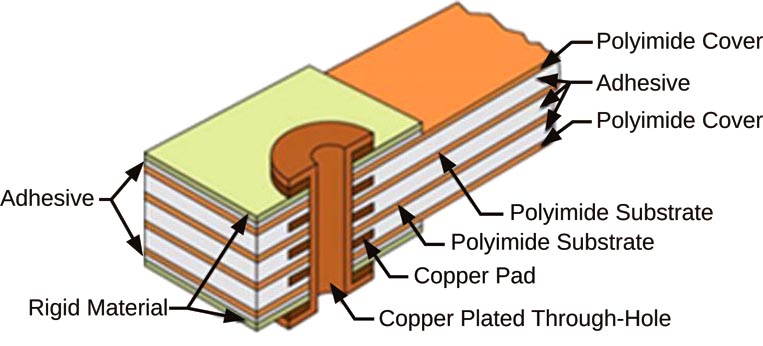Introduction
Rigid-flex PCB has a wide range of applications, such as it can be used in a variety of common electronic products in common life, but also can be installed in high-end aircraft armed systems. Military aviation and medical devices are the most important conventional applications of rigid-flex PCBs.
Rigid-flex PCB can provide many advantages to meet the needs of military aviation design, because it can reduce the overall weight of electronic equipment, at the same time, but also reduce the size of the exterior. In addition, for medical equipment, the advantage of rigid-flex PCB is that it can be bent and folded in a very compact space range, which can greatly improve the reliability of equipment, such as a pacemaker.
PCBWay is one of the best PCB prototype and assembly manufacturer in China. Good quality and fast delivery time help them earn the reputation from all over world engineers.
Now more and more engineers have noticed that their flexible board service is also very good. Their engineers will review your file and feedback to you the production details. Also their after-sale team will ensure everything goes OK.
About Rigid-Flex PCB Design
When designing rigid-flex PCB, the characteristic manufacturing technology and various materials used to construct its structure must be considered seriously. Designers cannot simply use the common lead pads used on rigid or 4-layer PCBs, and expect the same amount of output when rigid-flex PCBs are produced.
Polyimide has less dimensional stability than FR-4. Once the copper layer is etched away, the flex-PCB material shrinks. Of course, as a manufacturer with rich production experience, PCBWay know the movement of general materials and can estimate the amount of materials accurately. Therefore, when the PCB is machining, the PCB can meet the specified size error requirements. If the designer does not pay attention to the potential manufacturing process problems, it may lead to the later design update, in order to be able to adapt to the manufacturer's specific process requirements.
For best results, all areas with the plated through-holes on the flexible PCB shall make the loop wire be progressively enlarged from a minimum in order to ensure that all wires to the soldering pad and the connections between the wires, which should form the tear-drops like connections.
About Rigid-Flex PCB Cost
For the vast majority of manufacturers, it may be more appropriate to use reinforced flexible boards than rigid flexible combined circuit boards. This is because the increased cost of PCB assembly often exceeds the cost range that the general manufacturer can afford. One of the most important steps to realize the large-scale production of rigid-flex PCB is to introduce suitable manufacturers in the early stage of the process operation. For military or medical electronics, cost may take a back seat to effectiveness. In this sense, it can accelerate the flexible circuit board in the market play a role.
You can also get instant quotation on PCBWay.
Now Rigid-Flex PCB in PCBWay as low as $75 and about 3-5 days delivery time.
Conclusion
For rigid-flexible PCB, there is a major cause of rising costs, that is, the utilization rate of raw materials and production of rigid-flex PCB. If designers can cooperate with manufacturing engineers in the initial stage of project design, they can complete the design work at a lower cost and avoid excessive cost.



